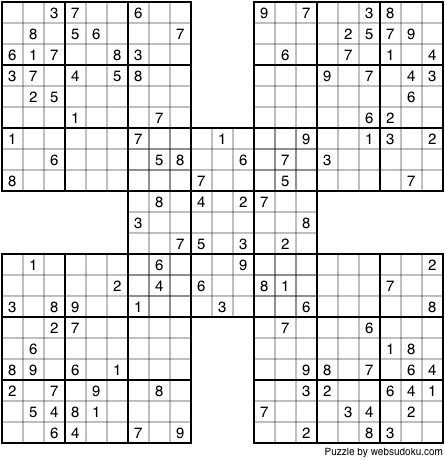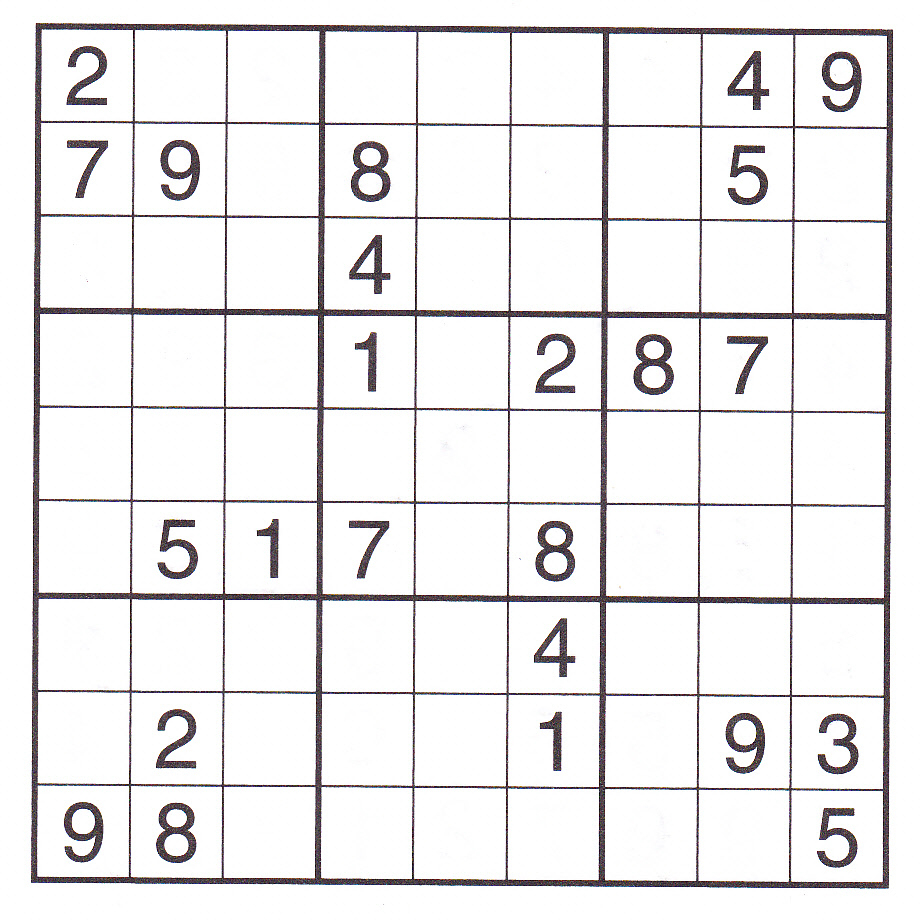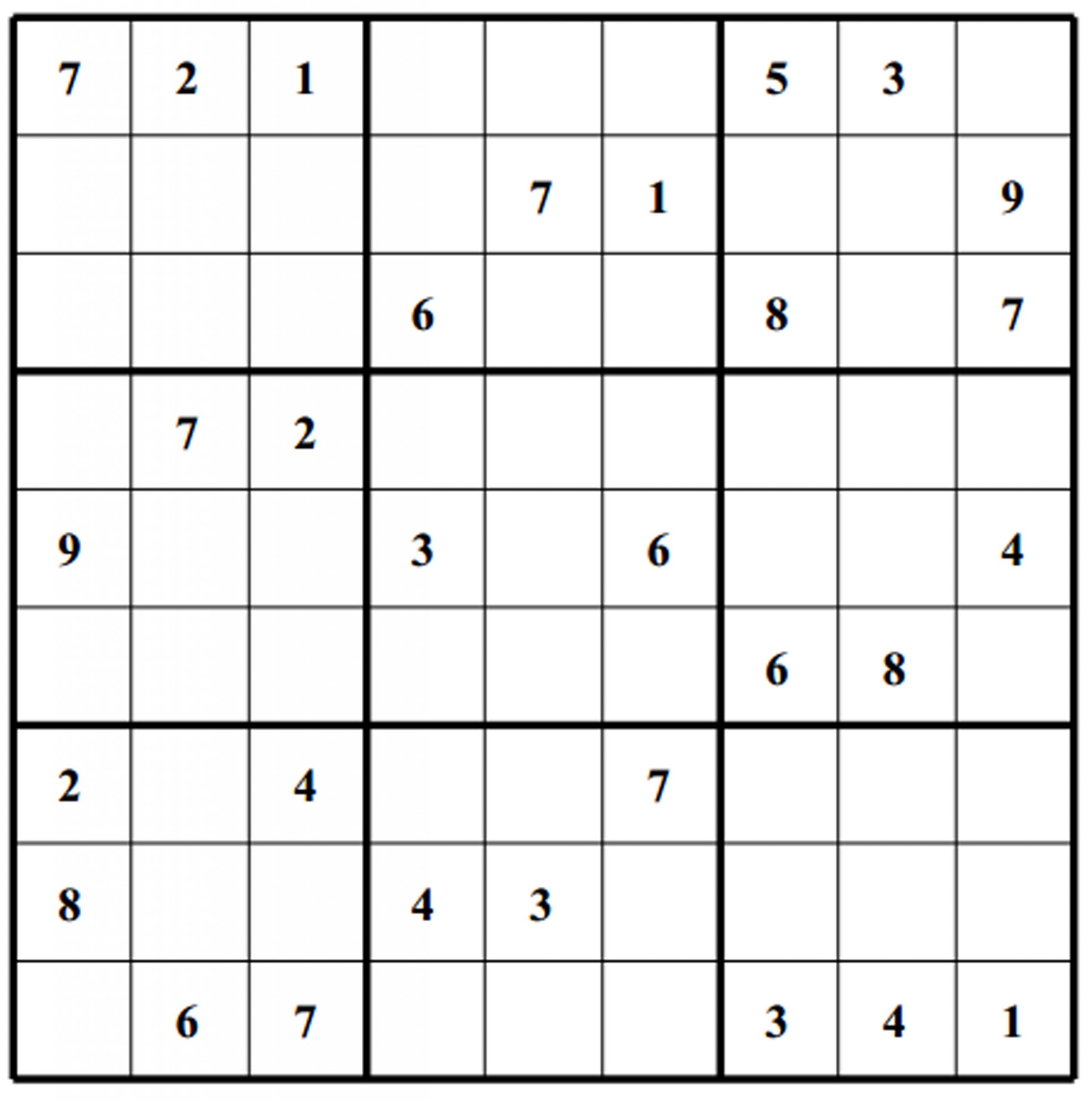


When such pairs are apparent, it’s called a naked pair. This is when two numbers can only be placed in two squares, but you don’t know which number goes into which space. One common problem you’ll encounter is a disjointed pair. You’ll then analyze the whole board to figure out which number combinations work. The idea is to use a pencil to fill a space with all possible number combinations. Here is where using pencil marking comes in. However, there will come a point when the scanning method mentioned above won’t cut it. Even when solving a hard puzzle, it’s a great opening move to fill in a good number of squares. This process of elimination is a fast, easy, and highly effective method to solve lower-level puzzles. In grids with many unfilled squares, this is often the only way to narrow down where to place a number. Scanning is especially effective when you’re looking at both rows and columns at the same time. The goal is to look at all the boxes where the number can’t be placed, hopefully leaving the one box where it should be. This involves picking a number and then looking at rows and columns across the grid containing that number. The most basic technique for solving Sudoku puzzles is to use the scanning method.
#Sudoku web free#
Of course, free Sudoku puzzles that can be played only at any time or day soon followed. Sudoku quickly spread to newspapers all over the world, delighting users every single day. Sudoku games were introduced in Japan five years later, where the number puzzles became immensely popular and were officially coined 'sudoku.' In 2004, The Times in London published its first daily sudoku, reintroducing the Sudoku puzzle to Western culture. His Sudoku used a 9x9 square, and all rows and columns needed to contain the numbers 1-9. These number puzzles disappeared around World War I, but reemerged in 1979 when an Indiana man named Howard Garns published the first modern Sudoku puzzle. The rows and columns did, though, add up to the same number. The number puzzles were not the exact same as sudoku, though, because they contained some double-digit numbers and did not have sub-squares. Number puzzles became popular in the late 1800s in France, when newspapers began to publish partially-filled number grids on their pages. Additionally, the puzzle is updated daily, giving you a new Sudoku challenge each and every day! Sudoku History We offer Sudoku for beginners, medium sudoku, and Sudoku for experts. In simple terms, the process of elimination is to check out which spaces are available and which few numbers are missing.Our free online version of web Sudoku follows in the number puzzle's classic tradition, no pen or pencil needed! As you start the puzzle you can choose your sudoku difficulty. and by that understanding exactly which numbers are missing from it. It's all about checking all those numbers which are already included in the square. Now you might be thinking, what the process of elimination has to do with Sudoku? In order To figure out which numbers will be making their way into individual spaces, you should be using the process of elimination. Keep calm and don’t force yourself, Sudoku is all about insights, patience, and recognition of patterns. If you are not able to find out which number you should locate in specific spaces, you should just keep on scanning the rest of the grid. You are not supposed to repeat any single number in any column, row, and square.

Every single column, row, and square is required to be filled with numbers that range from 1-9. All the nine squares are categorized in the form of columns and rows, which are made out of 3 x 3 spaces. Sudoku is a puzzle that is played on a grid of some 9 x 9 spaces. Our goal is to bring you high-quality daily curated online sudoku puzzles so you can keep your brain sharp.

Sudoku is a very popular puzzle! Here you can play all the levels of Online Sudoku.


 0 kommentar(er)
0 kommentar(er)
